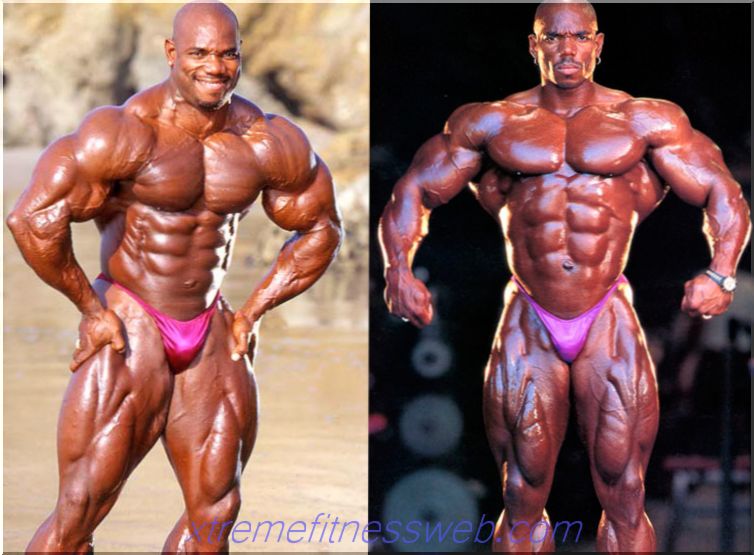- The benefits of the bar
- How to do an exercise bar
- Seven main types of plank
- Exercise Recommendations
- Conclusion

Plank - an exercise to strengthen the abdominal muscles, the maximum efficiency from which is achieved only if it is correctly performed. This article contains all the information that will help you understand the intricacies of this exercise. Subject to the following rules and recommendations, a positive result is ensured - a taut belly and an inflated press. All this can be achieved at home.
The most common mistake of beginners in gyms is a sharp and excessive load of the press, including classic or side twisting. Template exercises in this case are completely unimportant. To bring the muscles on the abdomen in tone, you can work out new and innovative ways of training. In particular, the bar, the implementation of which allows you to strengthen the muscles of the core, to form a strong muscle corsage.
It should be noted that this method of training is not used in cases where the work is on the terrain. The reason is that the bar is aimed at strengthening and shaping, and not at pumping up muscles. In this regard, the exercise is most popular among those who seek to increase the level of strength and endurance.
The bar is not an insulating exercise, its main goal is to strengthen the abdominal muscles, all the abdominal departments are not pumped.
Content
- 1 Benefits of the strap
- 2 How to do the exercise bar
- 3 Seven basic types of planks
- 3.1 Elbow
- 3.2 Side stand
- 3.3 Leg Stand
- 3.4 Stand with outstretched arm
- 3.5 Stand with transition
- 3.6 Side Upright
- 3.7 Rack with a fitball
- 4 Recommendations for the exercise
- 5 Conclusion
The benefits of the bar

Exercise contributes to the development of a number of body characteristics, namely:
- strengthens, develops muscles;
- improves concentration;
- perfect waist.
Read more about each benefit. The main effect of the exercise is aimed at the formation of stiff corset muscles, especially abdominal and dorsal muscles. If the bar is correctly executed, the cervical muscles will also be involved, which will significantly improve posture.
This method allows you to increase the endurance of the shoulder muscles, which is achieved due to their strengthening during training. Also, the bar stimulates the development of biceps, this is facilitated by the intensive work of the biceps of the shoulder, which occurs when the upper section is held on outstretched arms. In the process of training, the pectoral, lower dorsal, gluteal muscles, abs, and calves are strengthened.
From the point of view of psychology, an important advantage is improved concentration, the importance of which cannot be underestimated. Performing an exercise involves focusing and focusing on the goal. This is also a good test for character - a body stretched like a string must be held for a long time, which not everyone can do. At the same time, this is a great opportunity to work on yourself and temper your character, not to spare yourself and not give up.
This exercise will be appreciated by those who decided to start a fight with a sagging belly and a blurry waist. The bar will not only effectively eliminate these problems, but also make the body more perfect with a tightened waist and beautiful cubes. However, one should not forget about a balanced diet and refuse cardio training.
How to do an exercise bar

Watching the person performing this exercise gives the impression that it is very easy. In fact, it’s quite difficult to maintain the weight of your body, relying only on your hands, elbows and toes.
The plank technique includes the following steps:
- On the floor opposite a large mirror, lay a fitness / yoga mat. Then the emphasis is laid.
- Rest with your toes and hands on the floor and pull out the body.
- Stretch your back so that you can mentally draw a straight line from head to toe. Tighten the abdominal muscles, and control the central part of the body. Sagging, protrusion of priests should not be allowed, otherwise the exercise will not be effective.
- In this position, keep the body for at least half a minute, maximum - how much strength is enough.
Seven main types of plank
Different variations of the exercise may come in handy as the exposure increases, when the standard stand will not cause problems and the feeling of discomfort disappears.
Elbow

Having taken a prone position (belly down), stand on your elbows. Then lift the body in such a way that a straight line is mentally formed. It is important to prevent sagging or protrusion of the priests. This position holds the maximum amount of time, while recording all the results and increasing the duration of each training session (at the initial stage, the difference can be several seconds).
Side stand

It is performed according to the same principle as on the elbows, only the body turns sideways, and the emphasis is transferred only to one arm. Exercises are performed on each arm in turn. Standard requirements: a straight line of the body without sagging and bulging parts.
Foot stand

Take a starting position and raise your leg. Keep the body in this position for the maximum amount of time.
Arm extended

Take the starting position - the usual bar. Raise your hand and straighten it so that it is parallel to the body. In this position, hold for a while, then return to the classic stand and repeat everything, but with the other hand. This counts as one repetition.
Transitional stand

Lie on the floor, raise the body, as when performing the classic bar. Then go to the side rack, after 10 seconds, turn to the other side. The retention time on each side is the same - 10 seconds. Take the starting position. This counts as one repetition. That is, the classic stand alternates with the side without rest.
Side Upright

Take the position as when doing the side bar. An emphasis is placed on one hand, the second rises up above the body and straightens so that it is perpendicular to the floor. Lower your hand by touching the floor and raise it to its original position. Do 10 times, then switch sides and repeat again.
Stand with a fitball

You will need a bench for this exercise. Feet placed on the bench, forearms - on the ball. With the correct execution of the rack, the body forms a straight line from the shoulders to the ankles. Hold the body in this stance for a minute.
You can proceed to the listed variations of the bar after an increase in endurance is observed when performing the classical technique. It is important to remember that such exercises increase blood pressure, therefore they are contraindicated for people experiencing health problems.
Exercise Recommendations

In cases when the bar is performed for the first time, it is recommended to start with short trainings - no longer than 30 seconds. Increase the time gradually, with each workout for a few seconds. Also, at the initial stage, you can do the exercise on bent knees, and proceed to the classic stance after the retention time of the “simplified” bar exceeds two minutes.
As additional exercises, pull-ups and push-ups are recommended, which allow you to strengthen the profile muscles involved in holding the bar.
If the bar is performed for the purpose of developing the spinal muscles and is prescribed by the therapist as a recovery exercise after damage, the course includes 10 days of training. The duration of holding the strap should be between 0.5-1.5 minutes. Thanks to such trainings, skeleton muscles are toned.
Conclusion

The information and recommendations contained in this article allow you to avoid mistakes when fulfilling the bar. Compliance with the rules is the key to the effectiveness of training and a guarantee of obtaining the expected result.
Finally, we offer to see another 100 options for slats:







